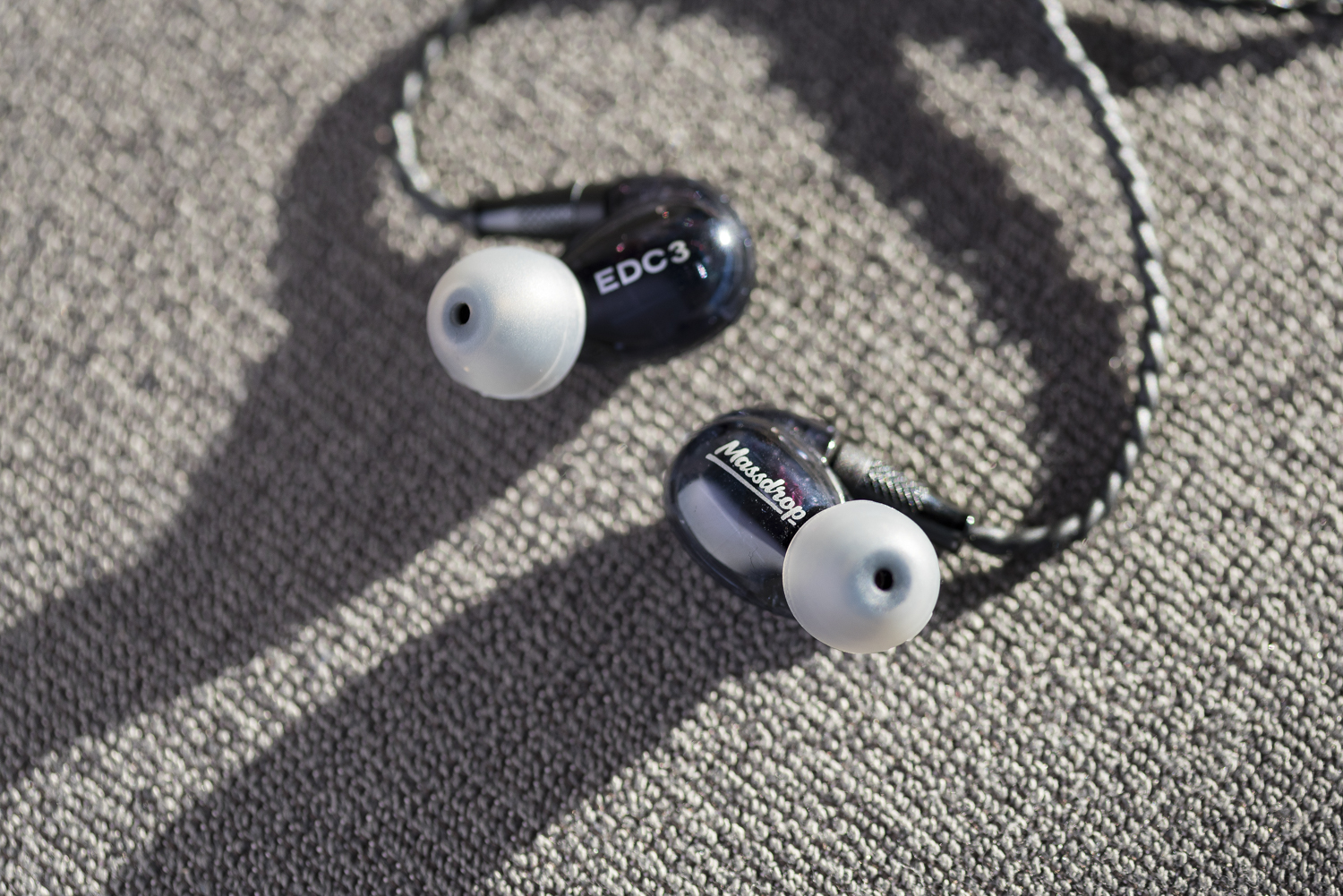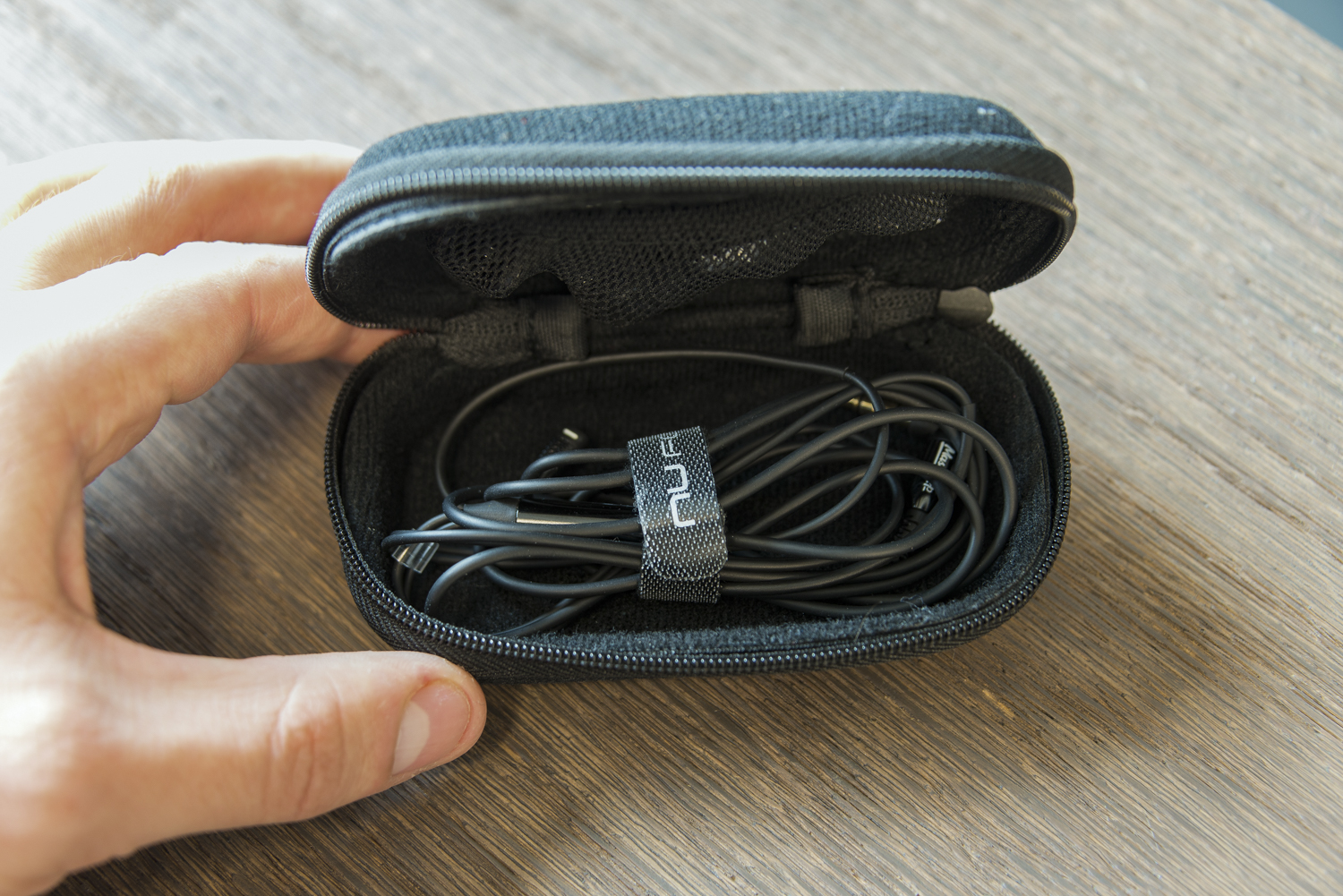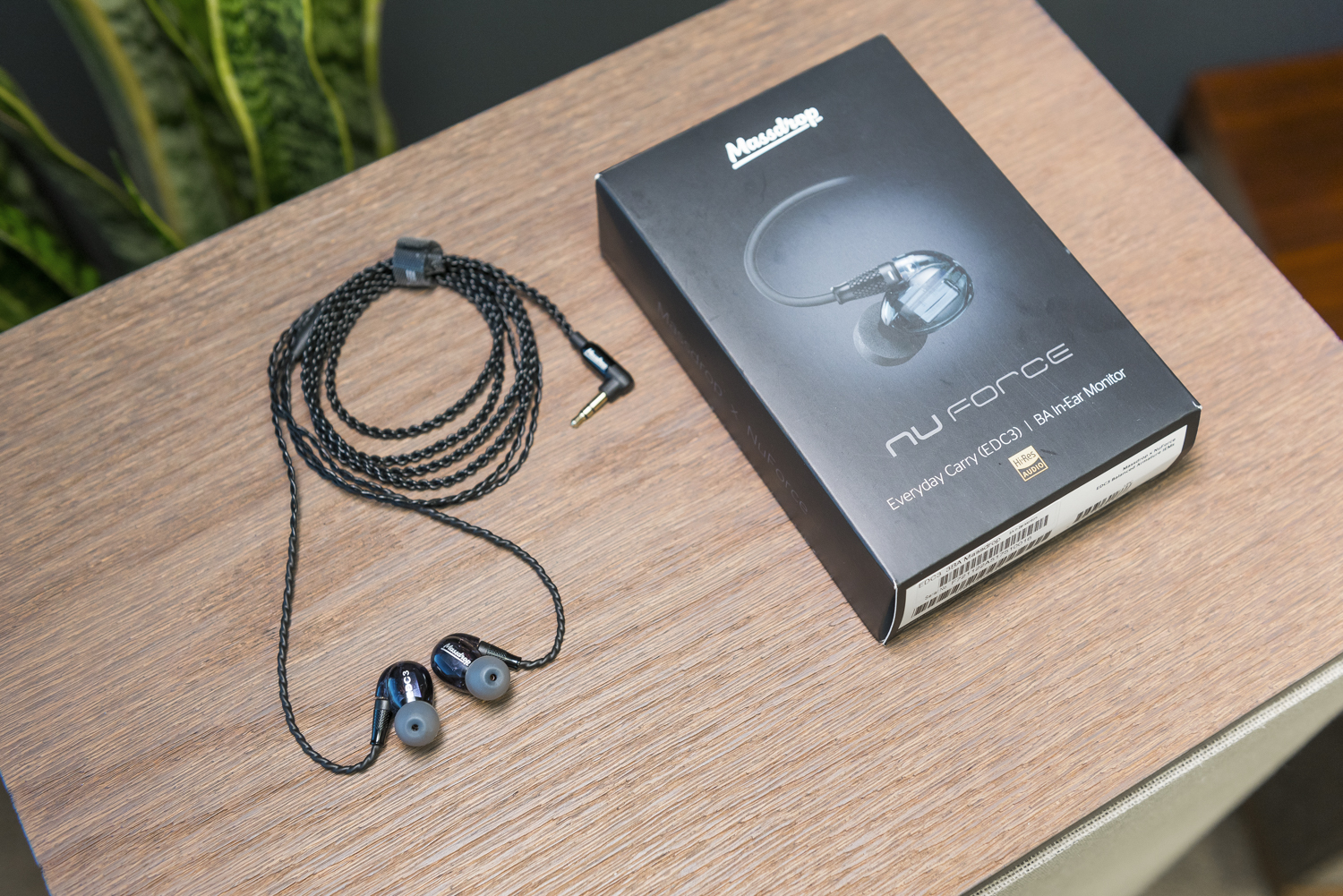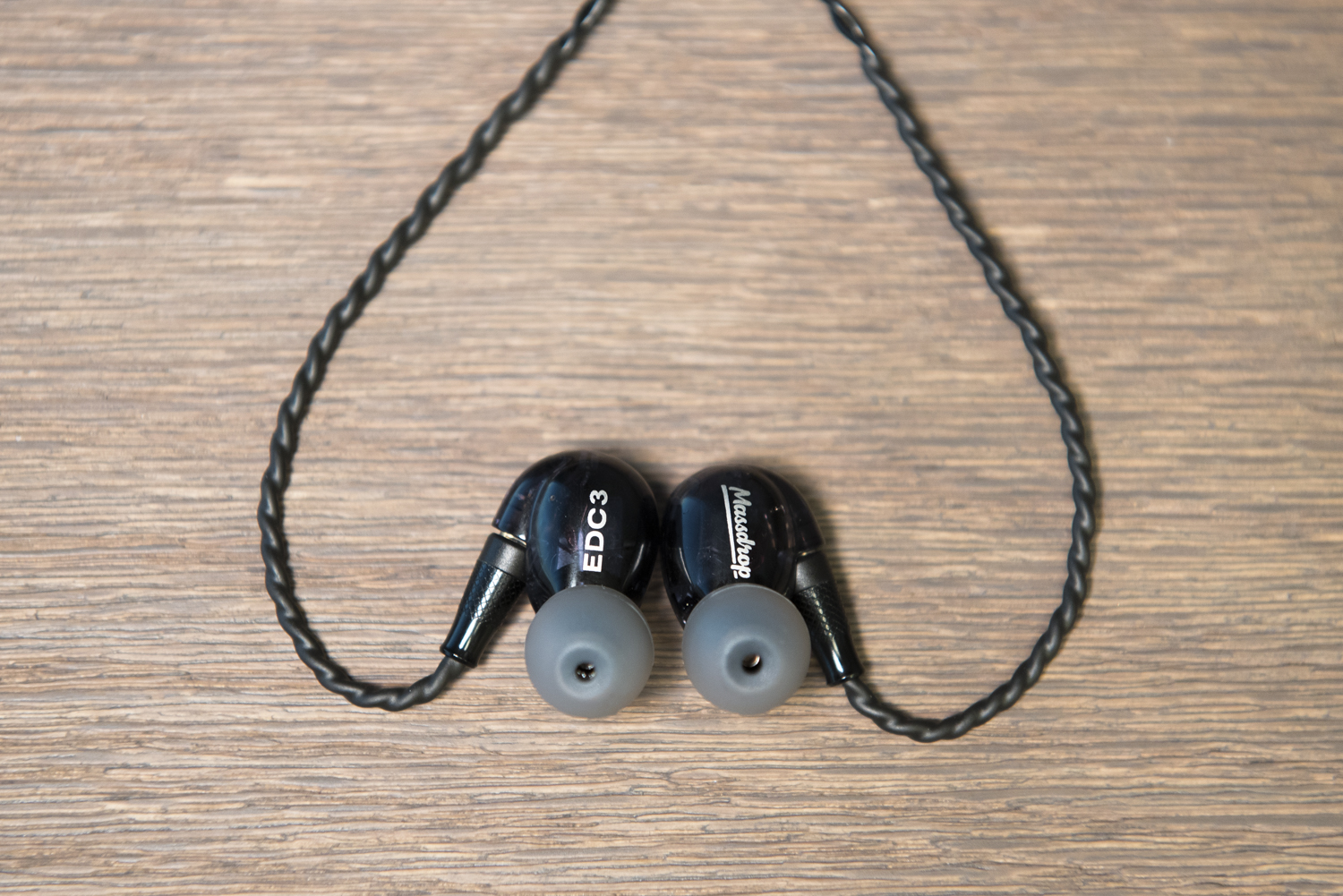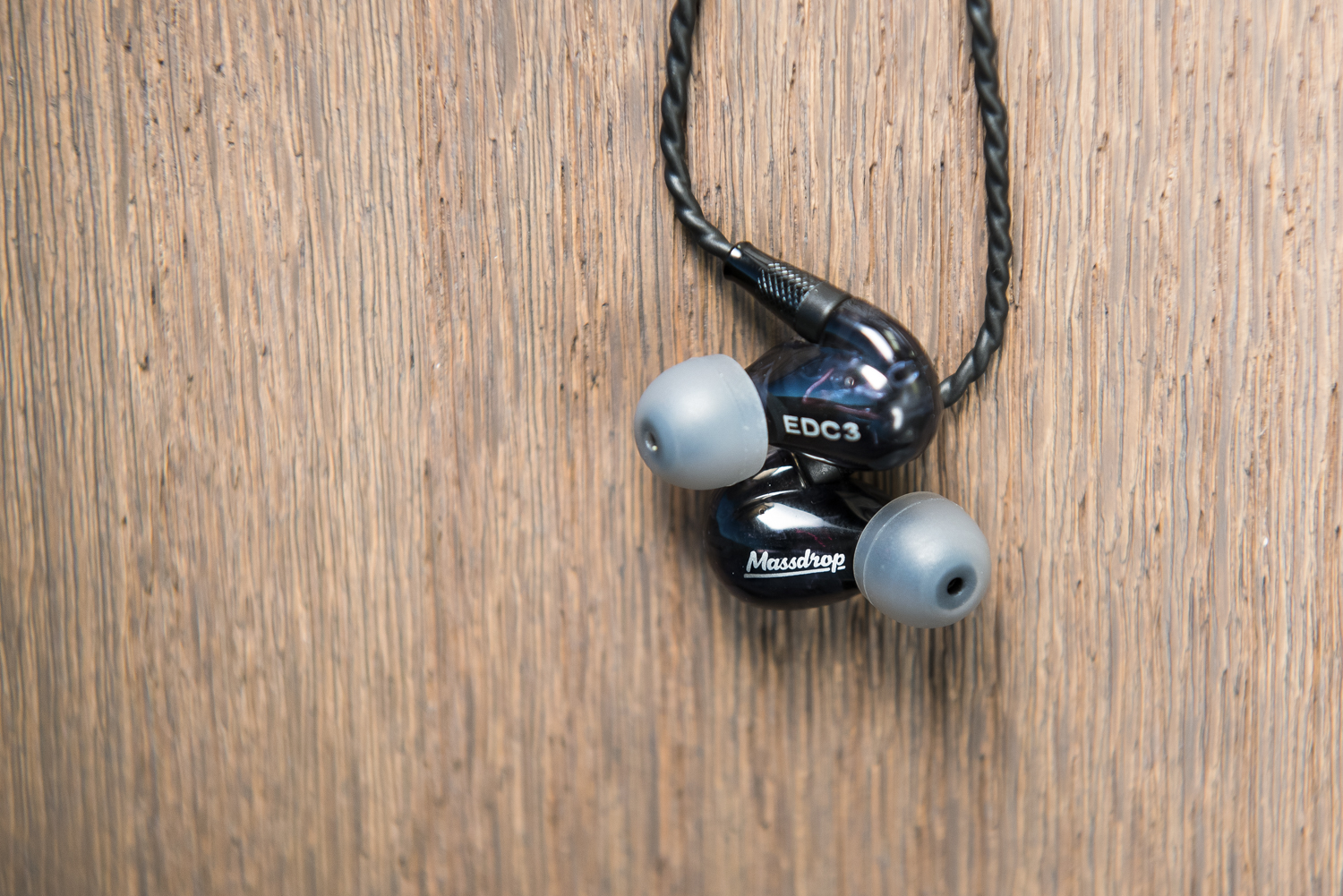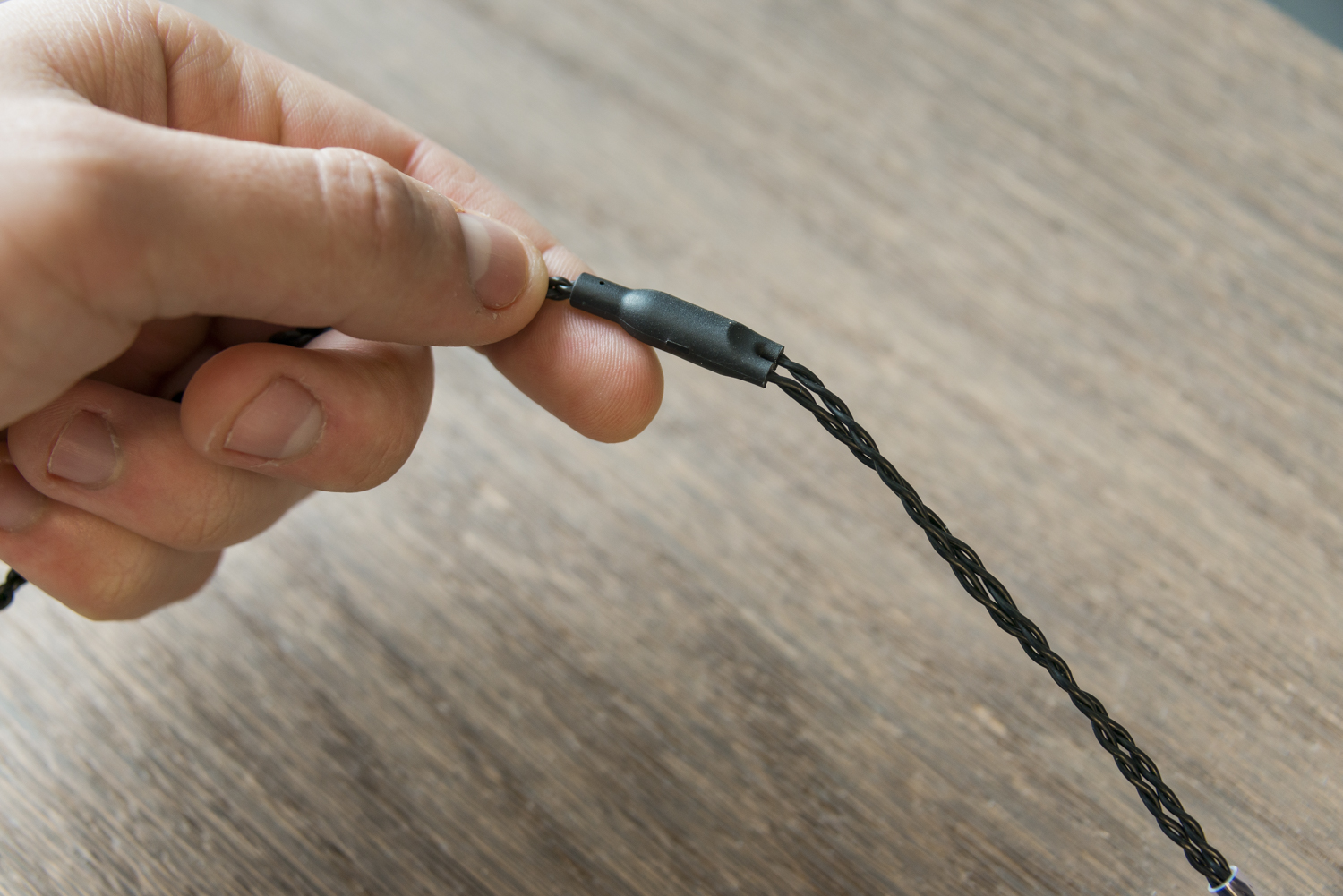Massdrop gives the people what they want — literally — and, in this case, the people apparently wanted some sweet earbuds from Optoma offshoot NuForce. NuForce has impressed us in the past with affordable, comfortable earbuds that also sound great, and according to the 5,000-plus orders listed on the EDC Massdrop page, many members of the Massdrop community agree. After the successful run of the $60 EDC (which stands for “Every Day Carry,” as they’re intended to be wear-everywhere earphones), Massdrop and NuForce collaborated on the $100 EDC3, which retains the detachable-cable setup from the EDC and adds two extra drivers in each earbud (hence the “3”).
For those unfamiliar with Massdrop, it’s a website where users vote on products they’d like to see, then commit to pre-orders of timed product “drops.” As more users order, prices go down (because Massdrop is essentially buying in bulk). When the drop ends, the manufacturer ships units to Massdrop, which ships those units to you. It’s sort of like crowdfunding, but without the inherent risk.
The real question is, then, how do the EDC3 sound? The answer: Good.
Small package, many things
The collaboration between Massdrop and NuForce is evident upon first glance at the EDC3’s packaging. Massdrop branding is plastered all over the cardboard box’s front and sides, while the back shows a neat cross-section of the earphones’ components. Inside, the buds are nestled in typical packing foam, and the rest of the goodies are tucked into a zippered NuForce carry pouch — the exact same pouch included with the Nuforce BE6i.
The EDC3 is mostly black, with translucent charcoal housings of polycarbonate
The headphones arrive connected to a removable, black braided cable. The earbuds are mostly black, with translucent charcoal housings of polycarbonate, through which you can (kind of) glimpse their innards. Both the buds themselves and the cable are color-coded for easy delineation: White for left, and yellow for right. If it helps, the left bud features the baseball-y Massdrop logo, while the right says “EDC3”.
The aforementioned goodies: Two spare pairs of silicone eartips, two pairs of memory foam eartips, a plastic shirt clip, and a basic cable (also color-coded) with a single-button inline remote and microphone. That’s a fairly standard haul for earbuds in the $100-$200 range.
Dependable design
NuForce created the EDC3 specifically as an entry-level headphone, focusing on value and reliability as design tenets. The removable cable design is an excellent value proposition; you get an extra cable included in case one goes kaput, of course, but if both cables meet their demise, you can just buy a new one rather than shelling out for another pair of earphones (look for .77mm two-pin cables, or contact Optoma NuForce directly). The proprietary two-pin connectors are easy to snap in and out, and don’t feel fragile or precarious like those used on the Advanced Model 3. Both cables have tiny plastic chin cinches.
Another reason for the creative cable solution: Some audiophiles believe that the electric circuits in cables with remotes and microphones can alter the sound produced. There’s enough science to support this claim, so while some listeners might not notice much difference (if any), it’s smart to err on the side of caution. The button on the bonus cable worked just fine in our experience, playing/pausing songs and answering/ending phone calls. The microphone itself is okay; it’s not great for trying to talk on a busy train, but we didn’t expect much.
NuForce is averse to the term “earbuds,” preferring to call them “in-ear monitors” (IEMs). The “in-ear” description is fitting, as the EDC3 entrench themselves snugly in the ear canal, creating a good seal even with the stock silicone eartips attached. The ear guides are extremely slim — barely visible, in fact — and wrap naturally around the ear, hewing close to the skin.
Where the original EDC earphones each housed a single 6mm dynamic driver, the EDC3’s housings are each packed with three balanced-armature drivers, utilizing a proprietary crossover design for smoother frequency transitions between the low, midrange, and treble registers. Plus, the EDC (both versions) are specifically tuned to improve left/right channel matching, according to Massdrop’s Audiophile Product Manager.
Superb sound
Given the
The EDC3 tick every box on the basic earphone checklist. They’re comfortable, seal well, and sound good across the spectrum.
Now, when we say great, we don’t mean “holy crap, it’s like I’m in the studio” great; these puppies are $100 after all, so they’re hardly the Sennheiser Orpheus of earbuds. But the EDC3 tick every box on the basic earphone checklist. They’re comfortable, they seal fairly well, and they sound good across the spectrum. Probably the most notable element is the bass, which is full, buoyant, and rarely overpowering. Playing The Weeknd’s Starboy, nearly every track feels kinetic, with 808s bouncing below his tenor voice.
Sub-bass is present, too, though subdued — it disappears entirely under brighter treble, as in Gnarls Barkley’s Smiley Faces — and the EDC3 handle dynamics surprisingly well. Listen to the horns fade in at the beginning of Lemaitre’s Closer (StarRo Remix), and you’ll see what we mean. The earphones create a warm, round sound signature that skews dark, but treble and midrange aren’t left out in the cold. Vocal arrangements like Charlie Puth’s If You Leave Me Now and Frank Ocean’s At Your Best (You Are Love) sound sublime, without a hint of distortion.
Some tracks can sound a bit echoey, like Kid Cudi’s 50 Ways to Make a Record, where airy synths beep between verses in an entrancing, ethereal manner, but it never becomes oppressive unless you really crank the volume up. We did slightly prefer the braided cable over the mic cable, as it sounded a tiny bit clearer (placebo effect, perhaps?).
The EDC3 don’t quite offer the same sparkling treble you’ll find in the excellent 1More Triple Drivers, but they’re comparable in performance, which is saying something.
Conclusion
The Massdrop x NuForce EDC3 find themselves in an interesting niche; they’re not cheap enough to be dollar-store disposables, and they’re not wireless — a sought-after feature for wear-everywhere earphones. Guess what? We don’t care. At an incredibly reasonable price, the EDC3 offer near-unmatched value, clever and comfortable design, and sound quality that begs superlatives, not apologies. The name is apt: These are worth buying and using every day.


